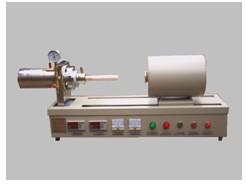
This advanced instrument integrates computer technology and intelligent systems, such as microcontroller-based devices, to monitor and control the entire process of physical quantity, displacement, and temperature. It supports both offline operation and automatic online testing, running seamlessly in a Chinese Windows environment with an intuitive and user-friendly interface. The device can be operated manually or through smart meters for offline testing, making it highly versatile for different applications.
Primarily designed to measure the thermal expansion coefficient of ceramic materials, refractory substances, and other solid materials—especially corundum, refractory products, casting shells, and core materials—it offers numerous advantages such as automation, ease of use, data output, storage, and easy access to a rich database. This makes it an essential tool for laboratories and research institutions conducting performance evaluations and scientific studies on ceramic and refractory products.
Key technical specifications include:
- Temperature range of the furnace: Room temperature to 1000°C
- Heating rate: 0.1–20 K/min (standard rate below 5 K/min, custom rates available)
- Control parameters: Heating rate, PID settings, and communication methods are fully adjustable and locked during the test process. All parameter changes are managed via the host computer.
- Expansion measurement range and accuracy: ±5 mm ±0.1%, ±2.5 mm ±0.1%
- Temperature control accuracy: ±1°C, with recording errors ≤ ±0.5%. Different heating elements and control methods are used depending on the temperature range.
- Expansion resolution: 1 µm per digit, with optional 0.1 µm per digit
- Sample dimensions: Length: up to 50 mm or 25 mm; Diameter: 6–8 mm (maximum)
- Test atmosphere: Vacuum (10â»Â¹ mbar), static, or dynamic; inert or reactive gases available; vacuum conditions can be customized
- Sample type: Solid or powder (with molds)
- Sample holders: Made from quartz, alumina, or other suitable materials as required
- Operating system: Compatible with Windows XP/98
- Application scope: Accurately measures material expansion or contraction during heat treatment, suitable for ceramics, resins, building materials, glass, refractories, metals, and alloys
With the DP-III model, you can perform a variety of tests, including:
- Thermal expansion coefficient measurement
- Softening temperature determination
- Sintering kinetics study
- Glass transition temperature analysis
- Phase transformation detection
- Density change monitoring
- Sintering rate control (RCS)
This instrument is ideal for researchers and engineers looking for precision, flexibility, and reliability in thermal analysis applications. Its combination of advanced technology and user-friendly design ensures efficient and accurate results across a wide range of materials and testing scenarios.
Garden Pot,Plant Pots,Flower Pots,Outdoor Plant Pots
Yixing Bocai Pottery Co.,Ltd , https://www.bocaipottery.com